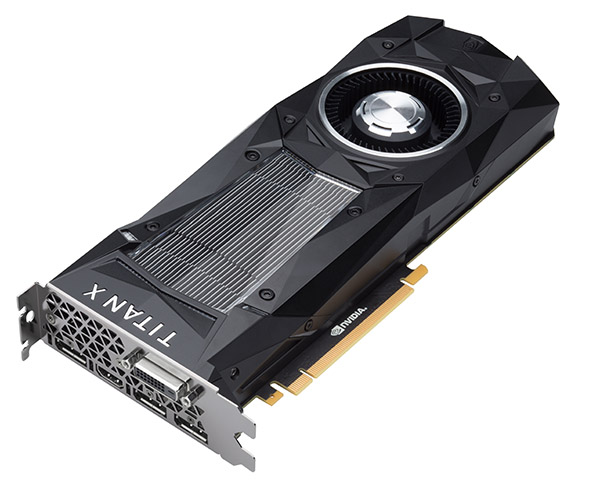Update: Nvidia Titan X Pascal 12GB Review
Conclusion
Now that we have power, thermal, and acoustic data, we can wrap up our evaluation of Nvidia's Titan X conclusively. The card clearly uses more power, gets warmer, and generates more noise than the GeForce GTX 1080, which shares its cooling solution. Naturally, we expected as much. But Nvidia manages those variables reasonably well, even if it means pulling clock rate as the GPU heats up. Unfortunately, we won't see any of the company's partners take a stab at cooling GP102 more effectively; Titan X is only available from Nvidia, and only on geforce.com.
We also have a good sense for how Titan X performs in games. On average, at 3840x2160, it’s almost 29% faster than GeForce GTX 1080, which was already 34% faster than GTX 980 Ti at the same resolution.
Whereas GeForce GTX 1080 Founders Edition hit the scene for $700, or just above the 980 Ti’s launch price, you’ll pay a 70%+ premium for Titan X’s extra speed. Forget the value calculation—that word has no place here.
Nvidia expects to sell most Titan X cards into the deep learning market. But there’s no doubt that GP102’s pedigree is shared with the gaming-oriented GP104. So, if you disagreed with my claim that GeForce GTX 1080 was the first card to enable playable performance at 4K with detail settings cranked up, here’s your chance to procure something better. Righteousness will run you an easy $1200.
How about a couple of GeForce GTX 1070s instead? That seemed to be the crowd favorite in Best Graphics Cards. Truth be told, though, I’m gun-shy about SLI for several reasons. First, there was Nvidia’s retreat from supporting three- and four-way configurations, which quietly acknowledged the difficulty in extracting satisfactory scaling. Further, though VR is still in its infancy, mGPU support remains conspicuously absent (aside from Nvidia’s own VR Funhouse). Lastly, we’ve talked to more than one developer about the challenges facing AFR moving forward, and they’re not easily surmountable. That’s why I prefer one powerful GPU to two cheaper cards. It’d be a shame to spend $900 on 1070s, only to discover a game you were ready to enjoy at 4K doesn’t (and may never) scale the way you want it to.
That’s why, no matter what Nvidia chooses to charge for its highest-end hardware, there will always be a contingent of investment bankers ready to buy, buy, buy. While $1200 is a crazy amount of money, we’ve tested pricier CPUs and SSDs—and a fast graphics card has a greater impact on your gaming experience than any other component. If you can afford one, Titan X performs superbly. If you can’t, well, both AMD and Nvidia are ramping up a brand new generation of 14/16nm GPUs already delivering unprecedented performance per dollar. Look there instead.
MORE: Best Deals
Get Tom's Hardware's best news and in-depth reviews, straight to your inbox.
MORE: Hot Bargains @PurchDeals
Follow us on Facebook, Google+, RSS, Twitter and YouTube.
-
adamovera Archived comments are found here: http://www.tomshardware.com/forum/id-3142290/nvidia-titan-pascal-12gb-review.htmlReply -
chuckydb Well, the thermal throttling was to be expected with such a useless cooler, but that should not be an issue. If you are spending this much on a gpu, you should water-cool it!!! Problem solvedReply -
Jeff Fx I might spend $1,200 on a Titan X, because between 4K gaming and VR I'll get a lot of use out of it, but they don't seem to be available at anything close to that price at this time.Reply
Any word when we can get these at $1,200 or less?
I wish I was confident that we'd get good SLI support in VR, so I could just get a pair of 1080s, but I've had so many problems in the past with SLI in 3D, that getting the fastest single-card solution available seems like the best choice to me. -
ingtar33 $1200 for a gpu which temp throttles under load? THG, you guys raked AMD over the coals for this type of nonsense, and that was on a $500 card at the time.Reply -
Sakkura Interesting to see how the Titan X turned into an R9 Nano in your anechoic chamber. :DReply
As for the Titan X, that cooler just isn't good enough. Not sure I agree that memory modules running 90 degrees C is "well below" the manufacturer's limit of 95 degrees C. What if your ambient temperature is 5 or 10 degrees higher? -
hotroderx Basically the cards just one giant cash grab... I am shocked toms isn't denouncing this card! I could just see if Intel rated a CPU at 6ghz for the first 10secs it was running. Then throttled it back to something more manageable! but for those 10 secs you had the worlds fastest retail CPU.Reply -
tamalero Does this means there will be a GP101 with all core enabled later on? as in TI version?Reply -
hannibal TitanX Ti... No, 1080ti is cut down version. Most full ships will go to professinal cards and maybe we will see TitanZ later...Reply
-
blazorthon An extra $200 for a gimped cooler makes for a disappointing addition to the Titan cards.Reply

